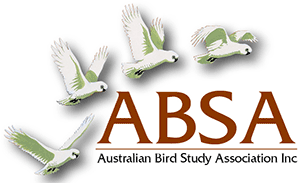HISTORICAL AND SEASONAL CHANGES IN THE COMMUNITY OF FOREST BIRDS AT LONGNECK LAGOON NATURE RESERVE, SCHEYVILLE, NEW SOUTH WALES
| Posted: |
03/08/2021 |
| Author(s): |
D. L. Pepper-Edwards, J. R. Farrell, K. H. Egan |
Observations dating back to 1937, banding data accumulated from 1965 to 1994 and census data
collected from 1992 to 1995 have been used to show the changes in a community of forest birds at
Longneck Lagoon Nature Reserve on an historical and seasonal level. Many resident species have
disappeared from the site. These include Diamond Firetail, Zebra Finch, Hooded Robin, Red-capped
Robin, Scarlet Robin, Flame Robin and Black-eared Cuckoo. Other species have declined markedly
(Speckled Warbler, Weebill, Brown Treecreeper, Black-chinned Honeyeater, Jacky Winter and
Fuscous Honeyeater) while some species have increased in numbers (Brown Thornbill, Superb Fairywren
and Red-browed Finch). New additions to the community include Spotted Turtle-Dove, Red-whiskered
Bulbul, Common Blackbird, Common Myna, Common Starling and House Sparrow, but
these have not as yet made an observable impact on the proportions of native species within the
community. Seasonal fluctuations in the community are quite marked with up to 34 non-resident
species visiting the site with the Rose Robin being the only exclusively winter visitor. The only recorded
movement greater than 2 km from the site, was that of a Sacred Kingfisher that travelled to central
eastern Queensland. Interaction between the Brown and White-throated Treecreepers as well as the
three species of finch (Red-browed Finch, Diamond Firetail and Double-barred Finch) is examined in
light of their proportional representation of the resident community. Natural and human induced
changes at the site and their effects on the decline and demise of species are also examined.
>> Download Abstract |
File Size: 112KB
>> Download Complete PDF | File Size: 2MB
